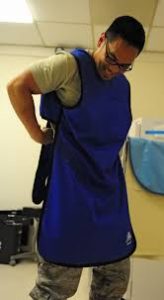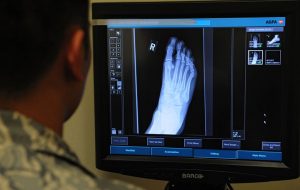Essential Steps for Radiologic Technologists to Ensure Radiation Safety

Everyone wants to be safe. Although we hear these things a thousand times, it never hurts to have a helpful reminder. So here are some of the essential steps for radiologic technologists to ensure radiation safety. RTs must complete these steps during medical imaging of patients in order to ensure the safety of their patients, coworkers, and themselves. It is noteworthy that special precautions may be needed for pregnant X-ray techs.
PLANNING
- Select and set up equipment and establish maintenance and quality control
- Document maximum and routine radiation output
- Install dose-reduction and dose-recording technologies in the equipment
PREPARATION
These are some of the essential steps for radiologic technologists to ensure radiation safety. These steps must be completed in the preparation stage before the image is acquired.
- Retrieve the patient’s previous radiation record
- Plan the procedure (technique, exposure factors, patient positioning, and anesthesia) to avoid repeats
- Remove grids for children weighing less than 20 kg or body parts less than 10 cm thick and use air gap technique instead
- Use dose-saving features (for example, last image hold, and pulse mode in fluoroscopy units)
- Collimate tightly to avoid dose to tissue outside the area of interest and protect sensitive organs
- Minimize overlapping fields in repeat acquisitions
- Minimize electronic magnification whenever possible
- Maximize source to patient distance and minimize patient to detector distance
- Use personal protective equipment (leaded eyewear, thyroid shield, and well-fitted leaded apron) and hanging/overhead shields to protect other body parts such as the lower extremities
- Keep hands out of the primary beam
- Step away as far as possible to reduce occupational radiation exposure based on the inverse square law
- Use a power injector or extension tubing when possible during fluoroscopic procedures
COMMUNICATION
- Answer the patient’s questions about radiation safety
- Provide instructions for positioning and breathing to avoid repeats
- Communicate with other personnel to work as a team and minimize radiation dose
REVIEWING AND REPORTING

After the image has been acquired, there are certain essential steps for the radiologic technologist to ensure radiation safety:
- Record DAP and cumulative air kerma on the patient’s dose record, and if unavailable, use surrogate measures such as fluoroscopy time to estimate the patient’s dose
- Review radiation dose. Flag for followup and counsel the patient if the skin dose exceeds 2 Gy or the cumulative dose exceeds 3 Gy (per NCI guidelines)
- Audit occupational exposure
TRAINING
- Receive training in radiation safety, basic radiation physics, as well as the effects of radiation
- Undergo ongoing education following initial credentialing and feedback when needed
ALARA
As low as reasonably achievable is a philosophy of safety that aims to minimize radiation dose and keep exposure as much below the established limit as is practically possible. It entails making all reasonable efforts to keep radiation exposure low, taking into account practical considerations such as technology and socioeconomic conditions. It should be noted that ALARA is not simply a philosophy but also a requirement by law.
What are the essential steps for radiologic technologists to ensure radiation safety based on the ALARA principle? Time, distance, and shielding are ways to keep external radiation exposure ALARA. Good hygiene, contamination control, protection against airborne hazards, and proper use of personal protective equipment are ways to keep internal radiation exposure ALARA. At every healthcare organization, to ensure radiation exposures follow the ALARA principle, the radiation safety committee and RSO develop and enforce procedures and policies, including:
- Periodically reviewing occupational radiation doses
- Briefing the hospital management regarding occupational exposure
- Reviewing radiation devices to ensure they incorporate the ALARA philosophy
- Establishing investigation levels of occupational exposure, which when exceeded warrant a review of technique
- Providing ongoing education and training to keep radiation exposures ALARA
X-ray Continuing Education
We offer a range of online X-ray CE courses. All our courses are category A credits which are good for your ARRT® CE requirements*, and are accepted by NMTCB, ARDMS, SDMS, every US state and territory, Canadian province, and all other Radiologic Technologist, Nuclear Medicine, and Ultrasound Technologist registries in North America for both full and limited permit technologists, guaranteed. Choose a course with the number and type of credits you need.
Here is details about arrt® continuing education and X ray CE.
